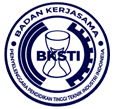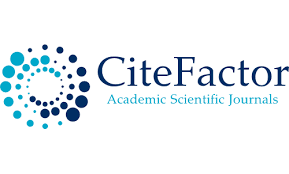Assembly Line Balancing and Sensitivity Analysis of a Single-Model Stochastic Sewing Line Using Arena Simulation Modelling
Abstract
Keywords
Full Text:
PDFReferences
Aǧpak, K. & Gökçen, H. (2007). A chance-constrained approach to stochastic line balancing problem. European Journal of Operational Research, 180(3), 1098–1115. https://doi.org/10.1016/j.ejor.2006.04.042
Alexopoulos, C., Kang, K., Lilegdon, W. R., Goldsman, D. & Kleijnen, J. P. C. (1995). Sensitivity analysis and optimization in simulation: Design of experiments and case studies. Winter Simulation Conference Proceedings, 1995., 133–140. https://doi.org/10.1109/wsc.1995.478715
Black, J. T. & Schroer, B. J. (1993). Simulation of an Apparel Assembly Cell with Walking Workers and Decouplers. Journal of Manufacturing Systems, 12(2), 170–180. https://doi.org/10.1016/0278-6125(93)90016-m
Bongomin, O., Mwasiagi, J. I. & Nganyi, E. O. (2020). A Complex Garment Assembly Line Balancing Using Simulation-based Optimization. Authorea. https://doi.org/10.22541/au.158809481.19997051
Boysen, N., Fliedner, M. & Scholl, A. (2007). A classification of assembly line balancing problems. European Journal of Operational Research, 183(2), 674–693. https://doi.org/10.1016/j.ejor.2006.10.010
Büyüksaatçi, S., Tüysüz, F. & Bilen, K. (2015, July 7). Balancing and Simulation of Assembly Line in an LCD Manufacturing Company. 2015 6th International Conference on Modeling, Simulation, and Applied Optimization (ICMSAO). https://doi.org/10.1109/ICMSAO.2015.7152254
Chetouane, F., Barker, K. & Viacaba Oropeza, A. S. (2012). Sensitivity analysis for simulation-based decision making: Application to a hospital emergency service design. Simulation Modelling Practice and Theory, 20(1), 99–111. https://doi.org/10.1016/j.simpat.2011.09.003
Dolgui, A. & Proth, J. M. (2013). Assembly Line Balancing: Conventional Methods and Extensions. 7th IFAC Conference on Manufacturing Modelling, Management, and Control, 46(9), 43–48. https://doi.org/10.3182/20130619-3-RU-3018.00644
Greasley, A. (2008). Using simulation for facility design: A case study. Simulation Modelling Practice and Theory, 16(6), 670–677. https://doi.org/10.1016/j.simpat.2008.04.009
Güner, M. G. & Ünal, C. (2008). Line balancing in the apparel industry using simulation techniques. FIBRES & TEXTILES in Eastern Europe, 16(2(67)), 75–78. https://www.researchgate.net/publication/285666435
Hoffmann, T. R. (1992). Eureka: A Hybrid System for Assembly Line Balancing. Management Science, 38(1), 39–47. https://doi.org/10.1287/mnsc.38.1.39
Islam, Md. M. & Adnan, A. (2016). Improving Ready-Made Garment Productivity by Changing Worker Attitude. European Scientific Journal, 12(4), 436–444. https://doi.org/10.19044/esj.2016.v12n4p436
Jamil, M. & Razali, N. M. (2016). Simulation of Assembly Line Balancing in Automotive Component Manufacturing. IOP Conference Series: Materials Science and Engineering, 114(1). https://doi.org/10.1088/1757-899X/114/1/012049
Kelton, W. David., Sadowski, R. P. & Zupick, N. B. (2014). Simulation with Arena (6th ed.). McGraw-Hill. https://www.mheducation.com/highered/product/simulation-arena-kelton-sadowski/M9780073401317.html
Kitaw, D., Matebu, A. & Tadesse, S. (2010). Assembly Line Balancing Using Simulation Technique in a Garment Manufacturing Firm. Journal of EEA, 27, 69–80.
Kleijnen, J. P. C. (2005). An overview of the design and analysis of simulation experiments for sensitivity analysis. European Journal of Operational Research, 164(2), 287–300. https://doi.org/10.1016/j.ejor.2004.02.005
Kleijnen, J. R. & Rubinstein, R. Y. (1996). Optimization and sensitivity analysis of computer simulation models by the score function method. European Journal of Operational Research, 88, 413–427. https://doi.org/10.1016/0377-2217(95)00107-7
Kottas, J. F. & Lau, H. S. (1981). A stochastic line balancing procedure. International Journal of Production Research, 19(2), 177–193. https://doi.org/10.1080/00207548108956640
Kursun Bahadir, S. & Kalaoglu, F. (2009). Simulation of Production Line Balancing in Apparel Manufacturing. FIBRES & TEXTILES in Eastern Europe, 17(4), 68–71. https://www.researchgate.net/publication/285684831
Law, A. M. & Kelton, W. D. (2015). Simulation Modeling and Analysis (5th ed.). McGraw-Hill. www.averill-law.com
Nikakhtar, A., Hosseini, A. A. & Wong, K. Y. (2012). Sensitivity Analysis of Construction Processes Using Computer Simulation: A Case Study. Advanced Science Letters, 13, 680–684. https://doi.org/10.1166/asl.2012.3923
Parvez, M., Amin, F. & Akter, F. (2017). Line Balancing Techniques To Improve Productivity Using Work Sharing Method. IOSR Journal of Research & Method in Education, 07(03), 07–14. https://doi.org/10.9790/7388-0703040714
Rezaul, M., Shumon, H., Arif-Uz-Zaman, K. & Rahman, A. (2010). Productivity Improvement through Line Balancing in Apparel Industries. Proceedings of the 2010 International Conference on Industrial Engineering and Operations Management Dhaka, Bangladesh, 100–110. http://www.iieom.org/paper/133%20rezaul.pdf
Rubinovitz, J. & Levitin, G. (1995). Genetic algorithm for assembly line balancing. International Journal of Production Economics, 41(1–3), 343–354. https://doi.org/10.1016/0925-5273(95)00059-3
Sarin, S. C., Erel, E. & Dar-El, E. M. (1999). A methodology for solving single-model, stochastic assembly line balancing problem. Omega, 27(5), 525–535. https://doi.org/10.1016/s0305-0483(99)00016-x
Scholl, A. & Vob, S. (1996). Simple Assembly Line Balancing-Heuristic Approaches. Journal of Heuristics, 2, 217–244. https://doi.org/10.1007/bf00127358
Shakibayifar, M., Sheikholeslami, A. & Corman, F. (2018). A simulation-based optimization approach to rescheduling train traffic in uncertain conditions during disruptions. Scientia Iranica, 25(2A), 646–662. https://doi.org/10.24200/sci.2017.4186
Sime, H., Jana, P. & Panghal, D. (2019). Feasibility of Using Simulation Technique for Line Balancing in Apparel Industry. Procedia Manufacturing, 30, 300–307. https://doi.org/10.1016/j.promfg.2019.02.043
Sivasankaran, P. & Shahabudeen, P. (2014). Literature review of assembly line balancing problems. In International Journal of Advanced Manufacturing Technology (Vol. 73, Issues 9–12, pp. 1665–1694). Springer-Verlag London Ltd. https://doi.org/10.1007/s00170-014-5944-y
Suresh, G. & Sahu, S. (1994). Stochastic assembly line balancing using simulated annealing. International Journal of Production Research, 32(8), 1801–1810. https://doi.org/10.1080/00207549408957042
Tanbin Haque, M., Shamim Hasan, M. & Rahat Hossain, M. (2018). Bottleneck problem reduction of a garment manufacturing industry in Bangladesh by using line balancing technique. International Journal of Research in Advanced Engineering and Technology , 4(2), 28–32. https://doi.org/10.13140/RG.2.2.32627.84004
Trigueiro de Sousa Junior, W., Barra Montevechi, J. A., de Carvalho Miranda, R. & Teberga Campos, A. (2019). Discrete simulation-based optimization methods for industrial engineering problems: A systematic literature review. Computers and Industrial Engineering, 128, 526–540. https://doi.org/10.1016/j.cie.2018.12.073
Wang, C.-H. & Zhu, B. (2017). Sensitivity Analysis of a Simulation Model for Managing Contact Centers with Impatient Customers. Proceedings of the 2017 International Conference on Applied Mathematics, Modeling and Simulation (AMMS 2017), 307–311. https://doi.org/10.2991/amms-17.2017.69
Yemane, A., Gebremicheal, G., Meraha, T. & Hailemicheal, M. (2020). Productivity Improvement Through Line Balancing by Using Simulation Modeling (Case Study Almeda Garment Factory). Journal of Optimization in Industrial Engineering, 13(1), 153–165. https://doi.org/10.22094/JOIE.2019.567816.1565
Yemane, A. & Santelices Malfanti, I. (2017). Optimal Layout Design by Line Balancing Using Simulation Modeling (Case Study on MAA Garment and Textile Factory). Proceedings of the International Conference on Industrial Engineering and Operations Management Bogota, Colombia, 228–245. https://www.researchgate.net/publication/335078941
Zheng, F., He, J., Chu, F. & Liu, M. (2018). A new distribution-free model for disassembly line balancing problem with stochastic task processing times. International Journal of Production Research, 56(24), 7341–7353. https://doi.org/10.1080/00207543.2018.1430909
DOI: http://dx.doi.org/10.22441/ijiem.v4i3.21655
Refbacks
- There are currently no refbacks.

This work is licensed under a Creative Commons Attribution-NonCommercial 4.0 International License.
IJIEM - Indonesian Journal of Industrial Engineering & Management
Program Pascasarjana Magister Teknik Industri Universitas Mercu Buana
Kampus Menteng - Gedung Tedja Buana, Floor 4th
Jl. Menteng Raya No. 29 Jakarta Pusat- Indonesia
Tlp.: +62 21 31935454 Fax: +62 21 31934474
http://publikasi.mercubuana.ac.id/index.php/ijiem
Email: [email protected]

This work is licensed under a Creative Commons Attribution-NonCommercial 4.0 International License.
The journal is indexed by:





1.png)
.png)
.png)
.png)







